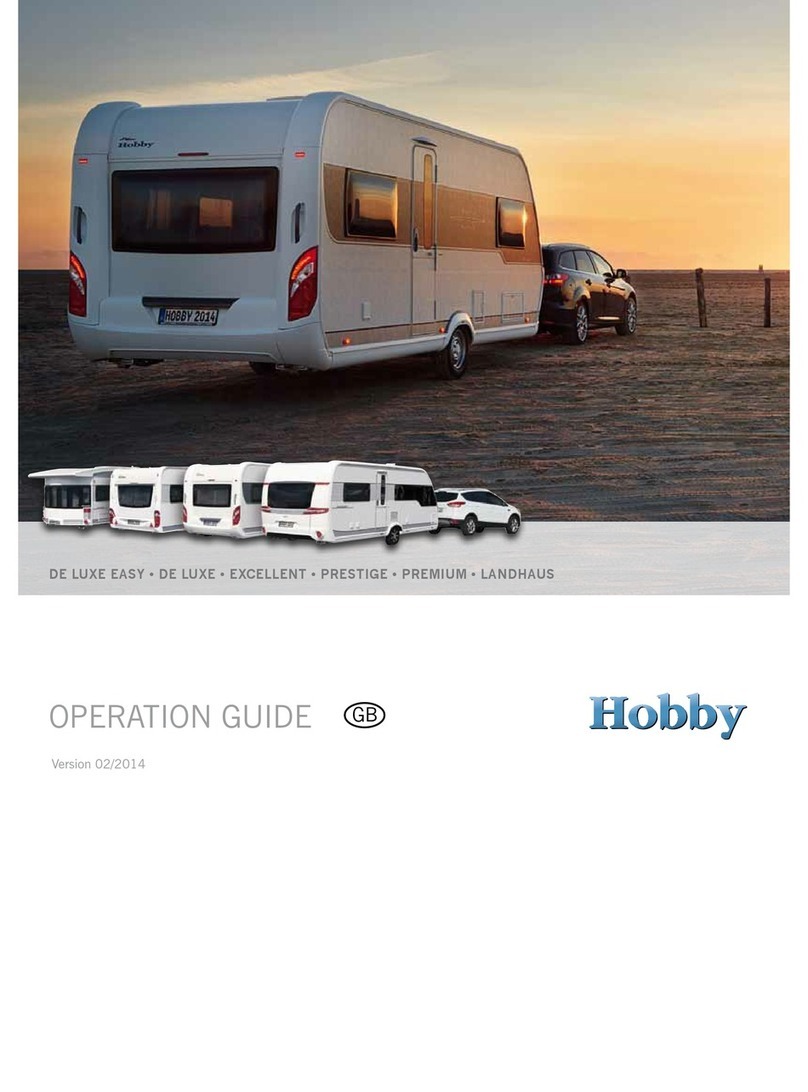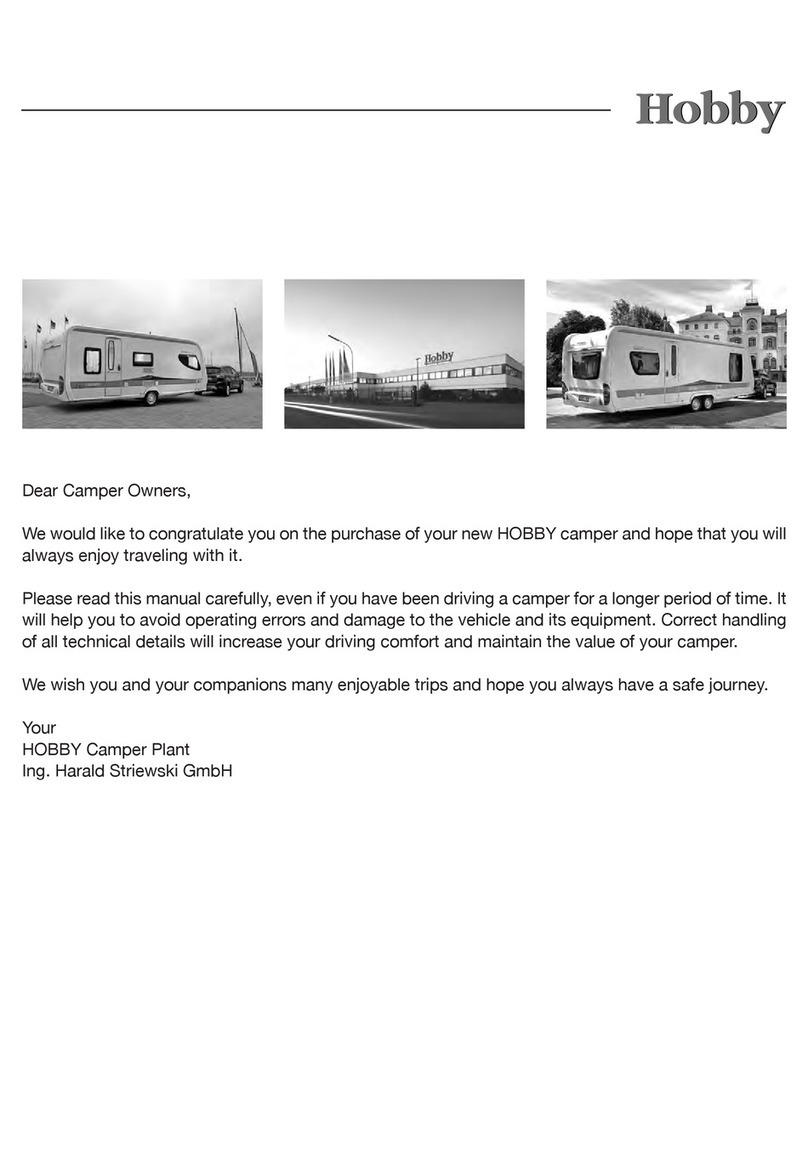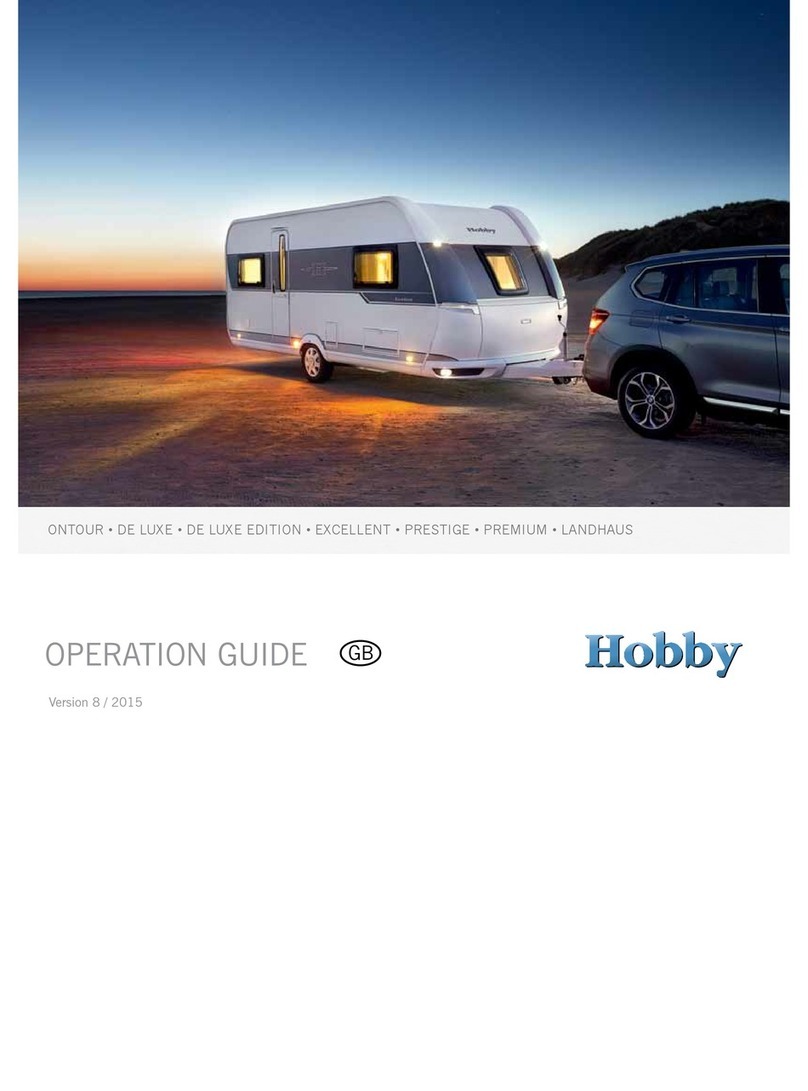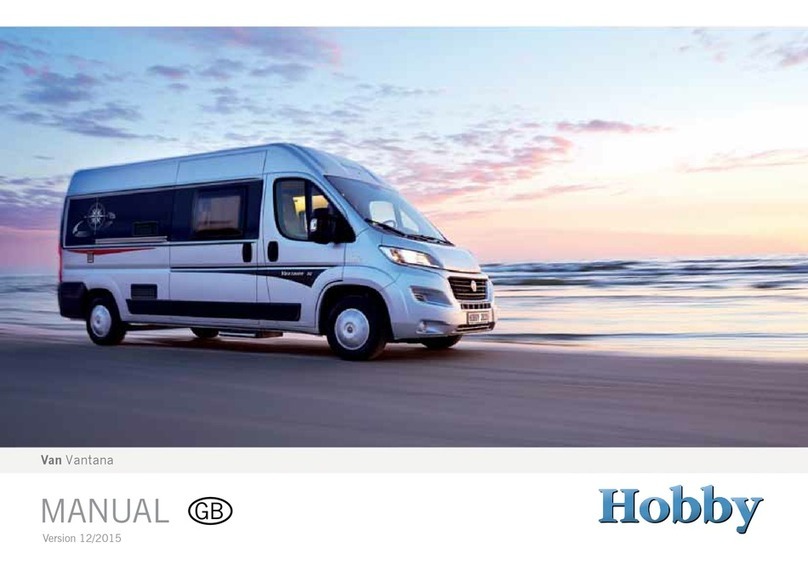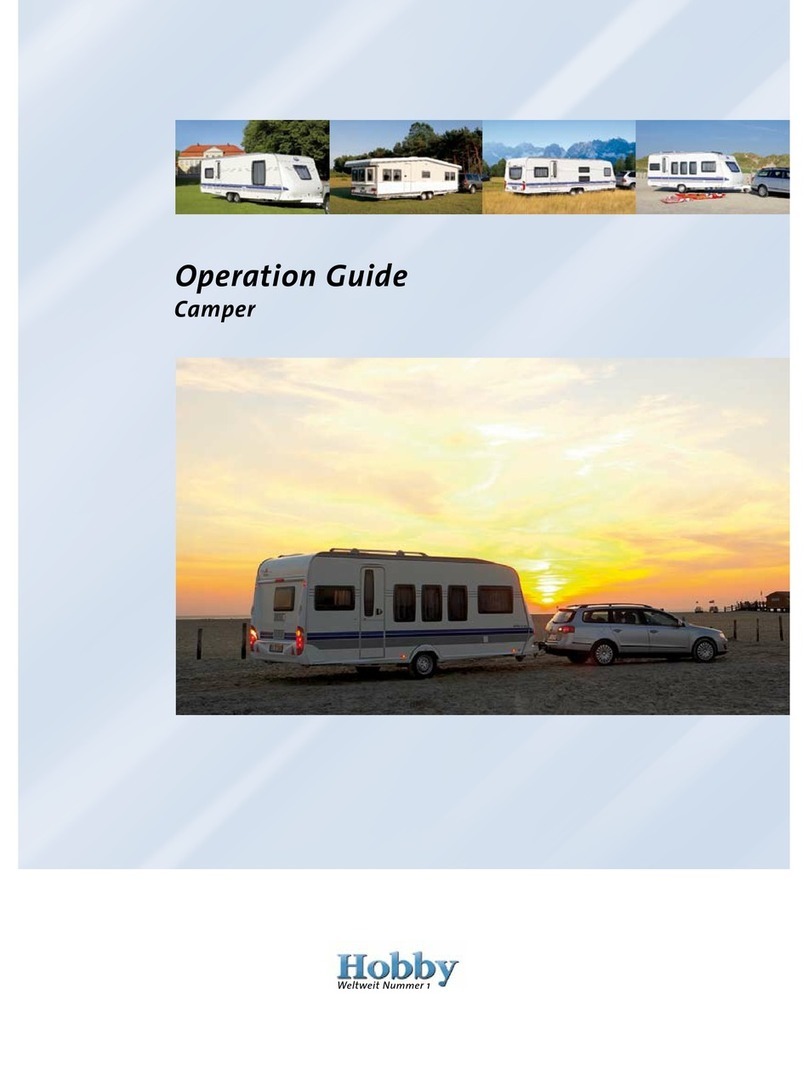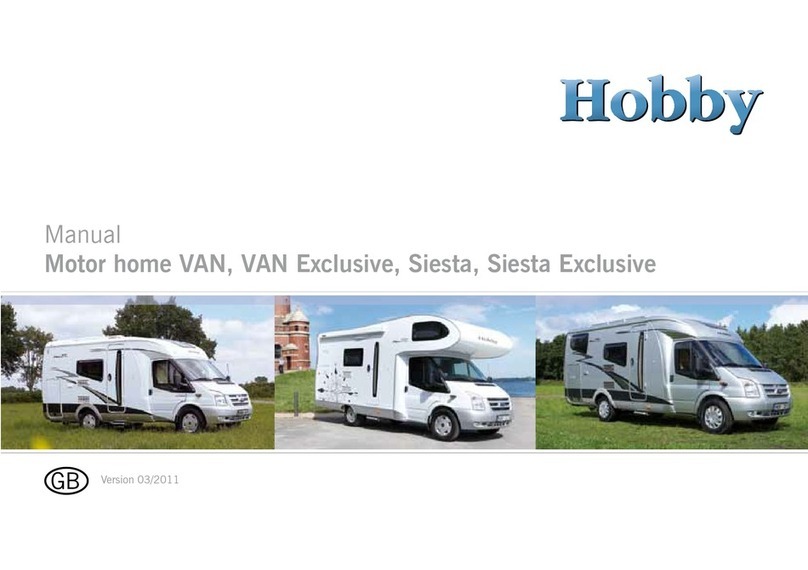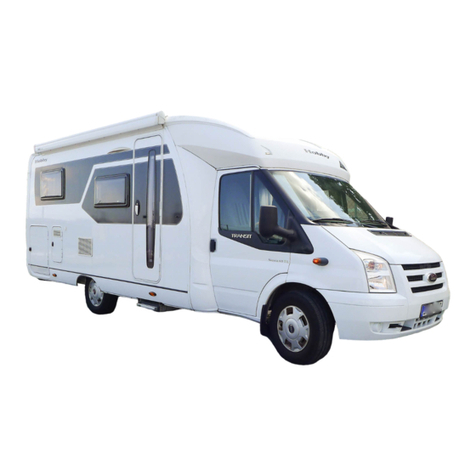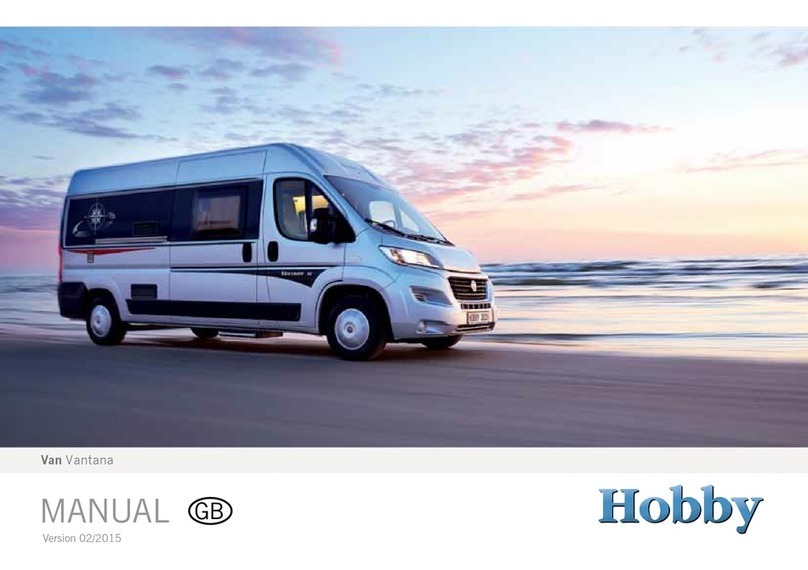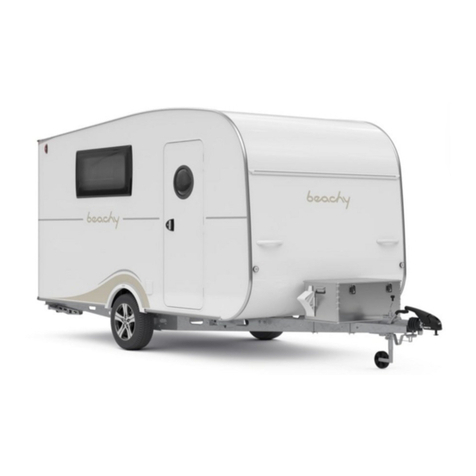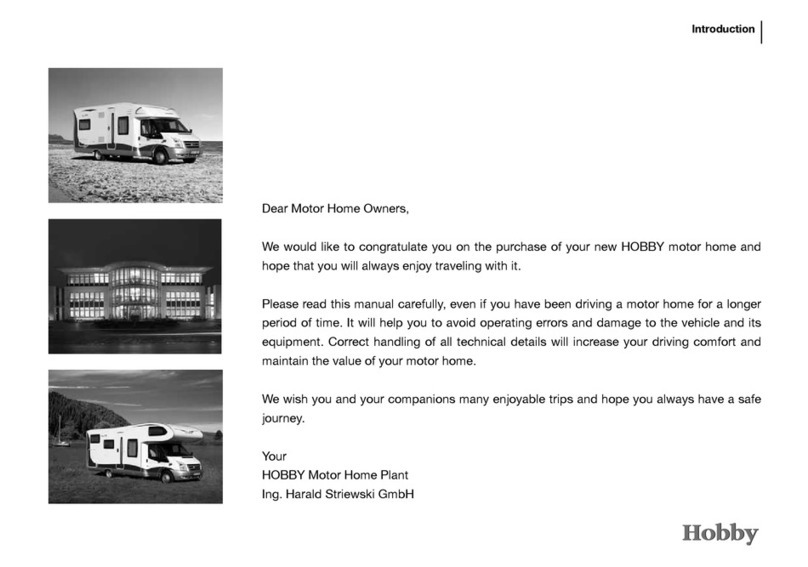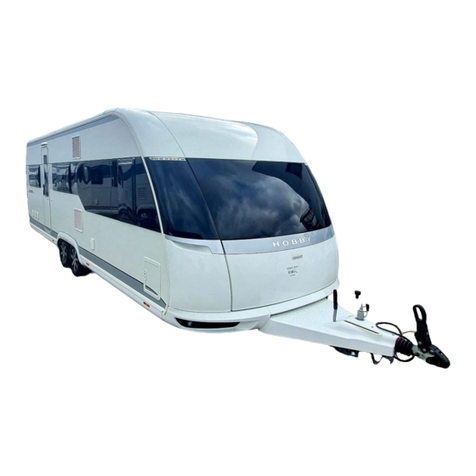
1. Introduction 3
6.13 Construction of the seats......................................... 80
6.14 Seatbelts in the motor home.................................... 82
6.15 Overview of the seating arrangements .................... 83
Chapter 7: Electrical Installations
7.1 Safety instructions ................................................... 86
7.2 Operation of the installed electrical systems ........... 86
7.3 Controlpanel............................................................. 88
7.3.1 HobbyConnect....................................................... 116
7.4 Electric power supply.............................................. 134
7.5 Electrical system ..................................................... 144
7.6 TV Connections....................................................... 147
7.7 Individual lights ....................................................... 149
7.8 Navigation system................................................... 150
7.9 Subsequently installed devices............................... 151
Chapter 8: Water
8.1 General information................................................. 152
8.2 Water supply ........................................................... 152
8.3 Toilet........................................................................ 158
Chapter 9: Gas
9.1 General safety rules when using LPG ttings..........162
9.2 Gas supply...............................................................164
9.3 Gas point, external ..................................................173
Chapter 10: Built-in devices
10.1 General information................................................. 174
10.2 Heating.................................................................... 174
10.2.1 Truma Combi Heating System C6 (E) ..................... 174
10.2.2 Hot-water heating system....................................... 188
10.2.3 Webasto auxiliary heating....................................... 194
10.3 Refrigerator............................................................. 196
10.4 Gas cooker ............................................................. 200
10.5 Extractor fan ........................................................... 202
10.6 Oven ....................................................................... 203
10.7 Roof mounted Air Conditioning.............................. 205
10.8 Satellite System...................................................... 206
Chapter 11: Accessories.................................................. 208
Chapter 12: Maintenance and Care
12.1 Maintenance........................................................... 212
12.2 Brakes .................................................................... 213
12.3 Changing bulbs in the rear lights ........................... 213
12.4 Airing ...................................................................... 216
12.5 Care ........................................................................ 217
12.6 Winterising your Motorhome.................................. 222
12.7 Winter Usage.......................................................... 224
Chapter 13: Sanitation and Environmental Protection
13.1 The environment and traveling ............................... 226
13.2 Returning the vehicle.............................................. 229
Chapter 14: Technical Data
14.1 Chassis data........................................................... 230
14.2 Increase in Load capacity....................................... 234
14.3 Vehicle and equipment weights.............................. 237
14.4 Tires and rims......................................................... 239
14.5 Tyre pressures ........................................................ 241
Index ............................................................................ 242
